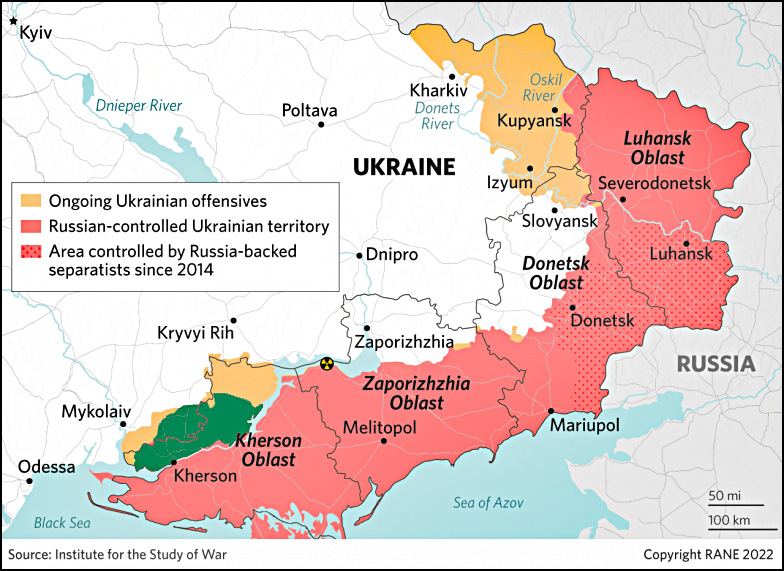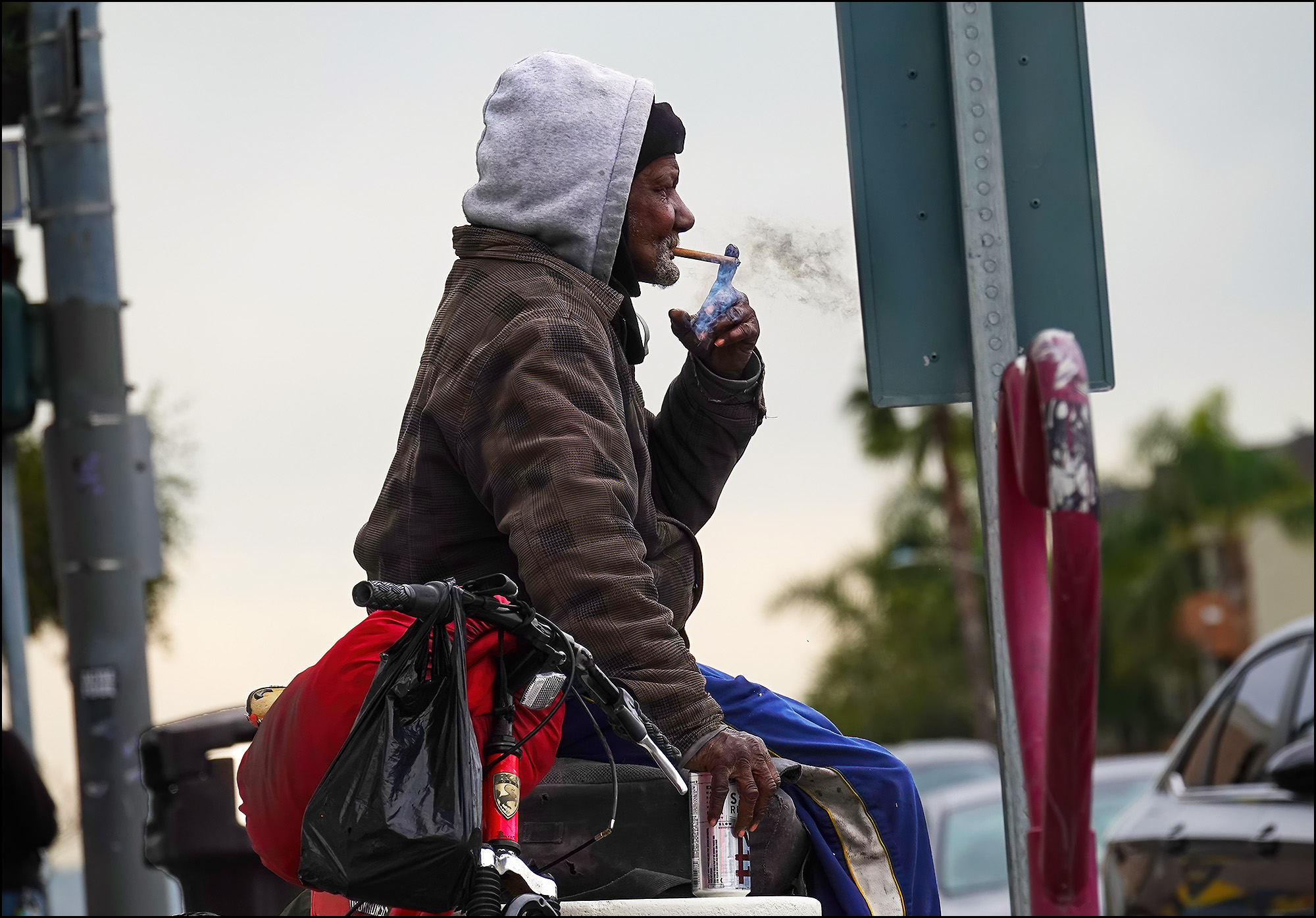Last night, as we were watching the election returns, I was given a homework assignment: How many utility-scale solar plants in California are built with battery storage so they can provide power after the sun goes down?
The short answer is that 58% of new solar projects were paired with battery storage in 2021. The long answer is a little more interesting. For starters, here is the power outlook for today, November 9, 2022:
 Next up, here's a map of some recent solar/battery hybrids that were brought online in 2021:
Next up, here's a map of some recent solar/battery hybrids that were brought online in 2021:
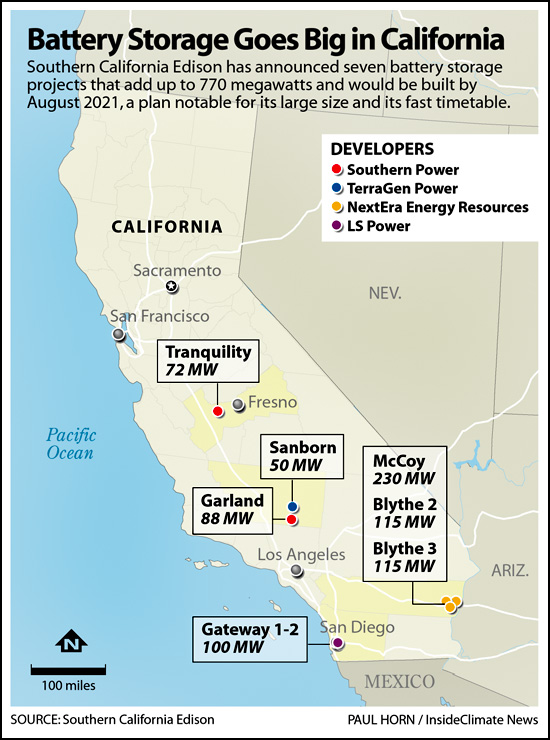 But the interesting part is that while it makes sense to co-locate solar and batteries, there's no real reason to. You can just build a standalone battery farm and connect it to the grid. So the critical metric isn't 58%, it's the raw capacity to supply power to the grid regardless of where it comes from. Here it is:
But the interesting part is that while it makes sense to co-locate solar and batteries, there's no real reason to. You can just build a standalone battery farm and connect it to the grid. So the critical metric isn't 58%, it's the raw capacity to supply power to the grid regardless of where it comes from. Here it is:
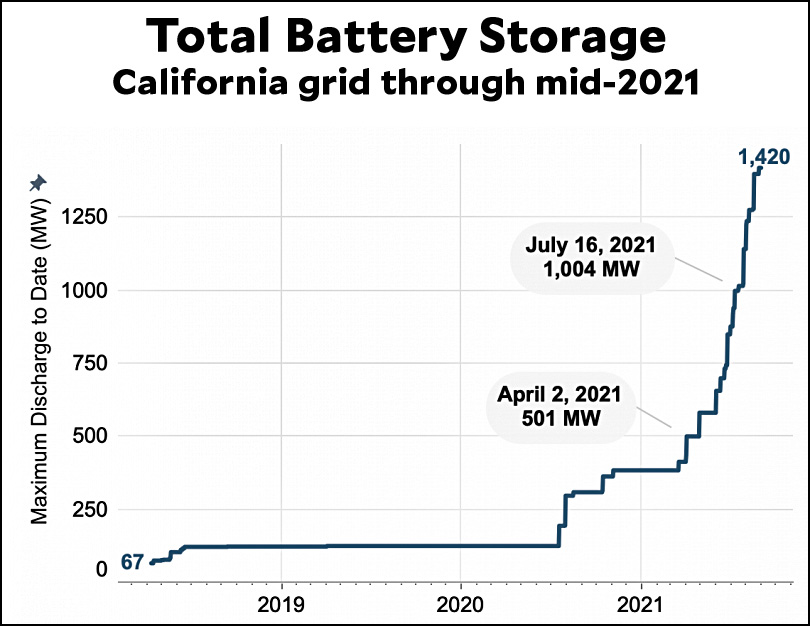 This number has skyrocketed over the past couple of years and continues to rise. In mid-2021 batteries provided 1,420 megawatts of power to the grid. Today it's over 2,000. Here is yesterday's battery usage throughout the day:
This number has skyrocketed over the past couple of years and continues to rise. In mid-2021 batteries provided 1,420 megawatts of power to the grid. Today it's over 2,000. Here is yesterday's battery usage throughout the day:
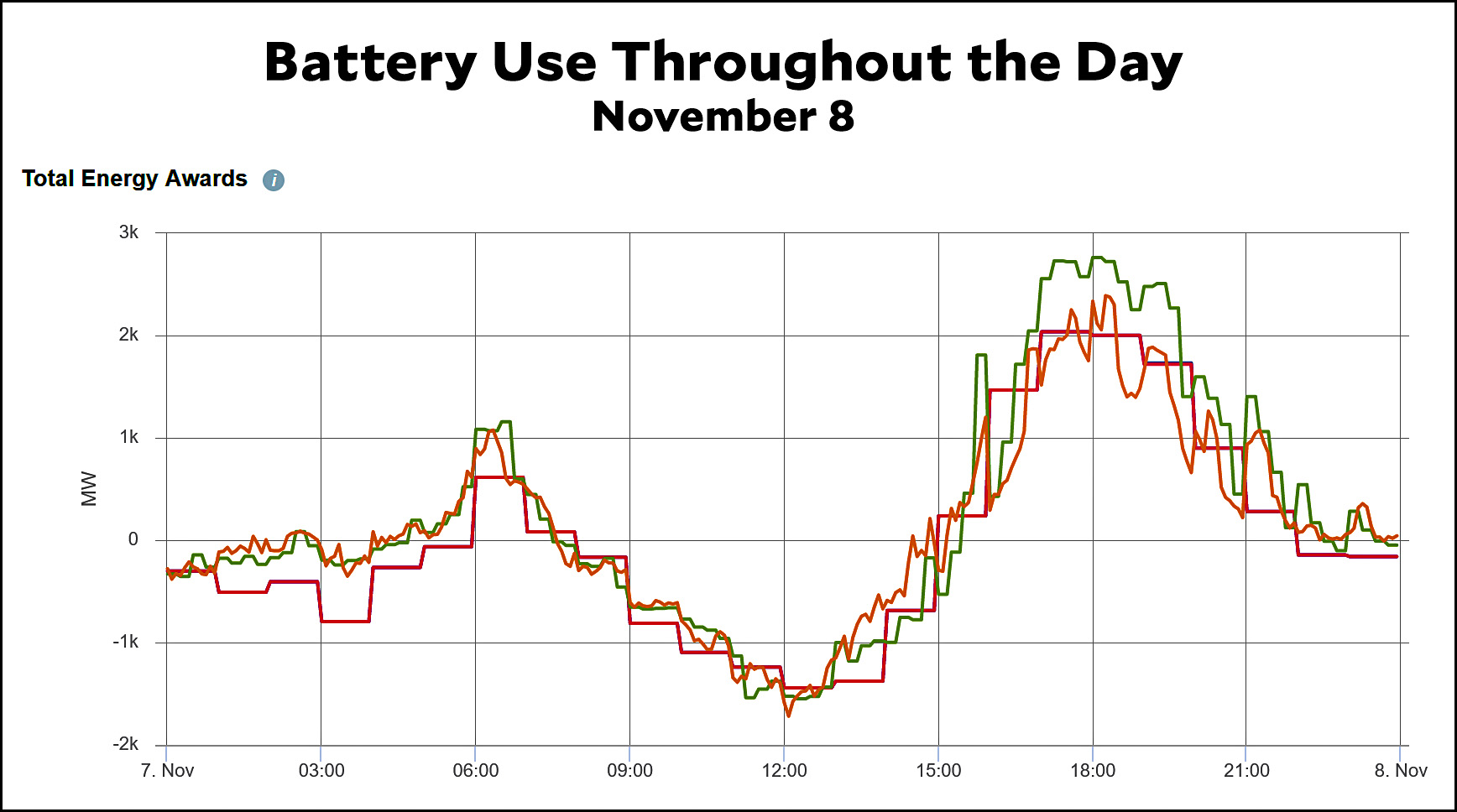 Finally, here's a chart that ties it all together:
Finally, here's a chart that ties it all together:
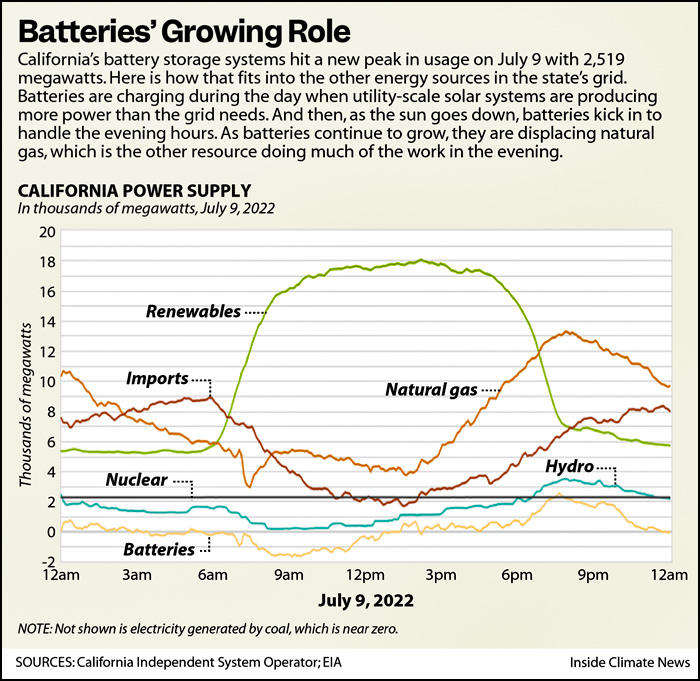 This is a little complicated, but it shows the sources of California electricity throughout the day. During daylight hours, solar and wind ("renewables") provide about 18,000 megawatts of power, far more than any other source. From dawn to midafternoon excess solar power is stored in the battery network. When it gets dark, the wind keeps blowing but we lose 12,000 megawatts of solar power. This is currently replaced by 8,000 megawatts of natural gas, 5,000 megawatts of imports from other states, and 2,000 megawatts of battery storage in order to meet peak demand during the hours of 7pm-10pm. Meanwhile, nuclear baseload chugs along at a constant 2,000 megawatts all day.
This is a little complicated, but it shows the sources of California electricity throughout the day. During daylight hours, solar and wind ("renewables") provide about 18,000 megawatts of power, far more than any other source. From dawn to midafternoon excess solar power is stored in the battery network. When it gets dark, the wind keeps blowing but we lose 12,000 megawatts of solar power. This is currently replaced by 8,000 megawatts of natural gas, 5,000 megawatts of imports from other states, and 2,000 megawatts of battery storage in order to meet peak demand during the hours of 7pm-10pm. Meanwhile, nuclear baseload chugs along at a constant 2,000 megawatts all day.
Today, battery storage provides about 7% of peak demand, but the plan is to keep building massive battery capacity so we can reduce the use of natural gas plants during the evening.
NOTE: California is by far the biggest user of battery storage in the country. It has about twice the capacity of the #2 state, Texas, and five times as much as #3, Illinois.



